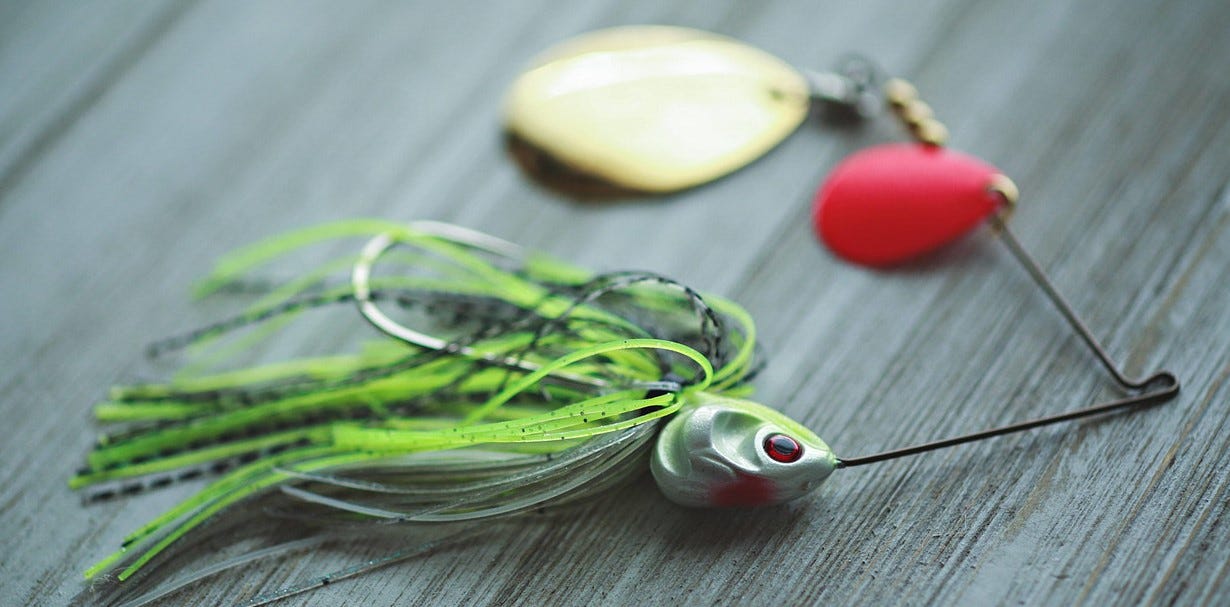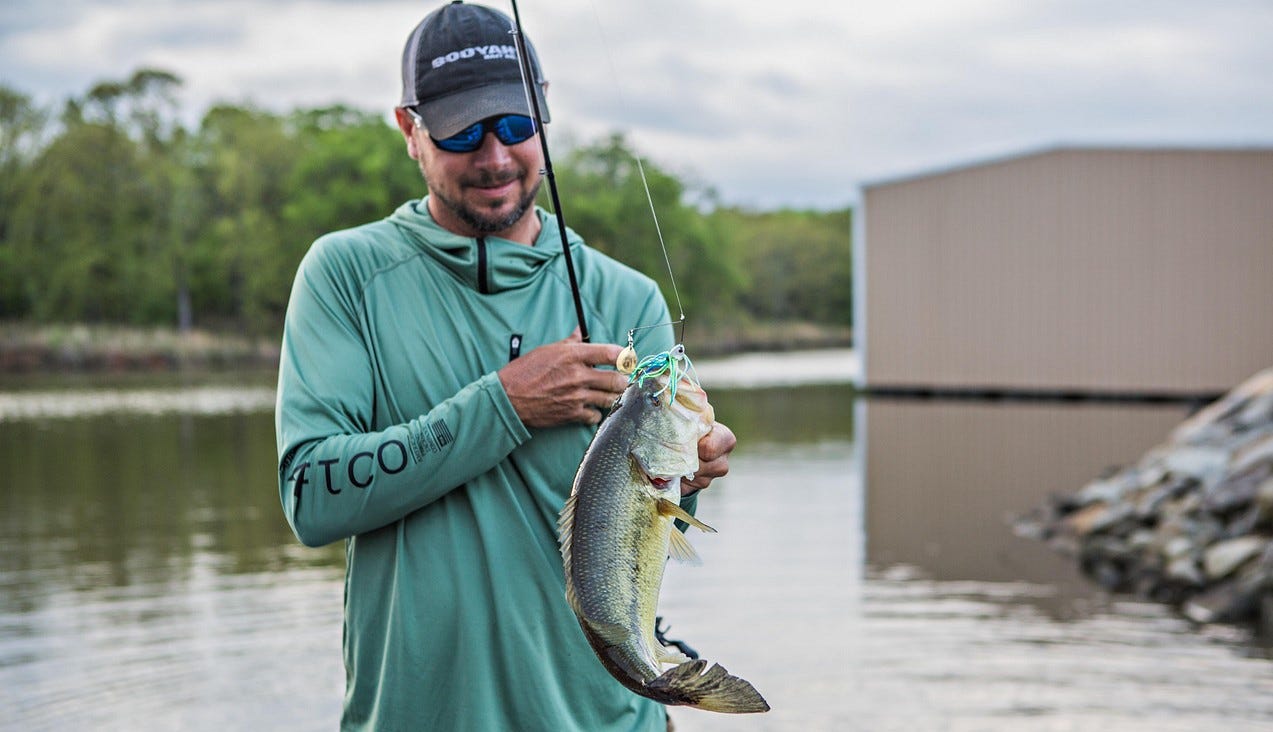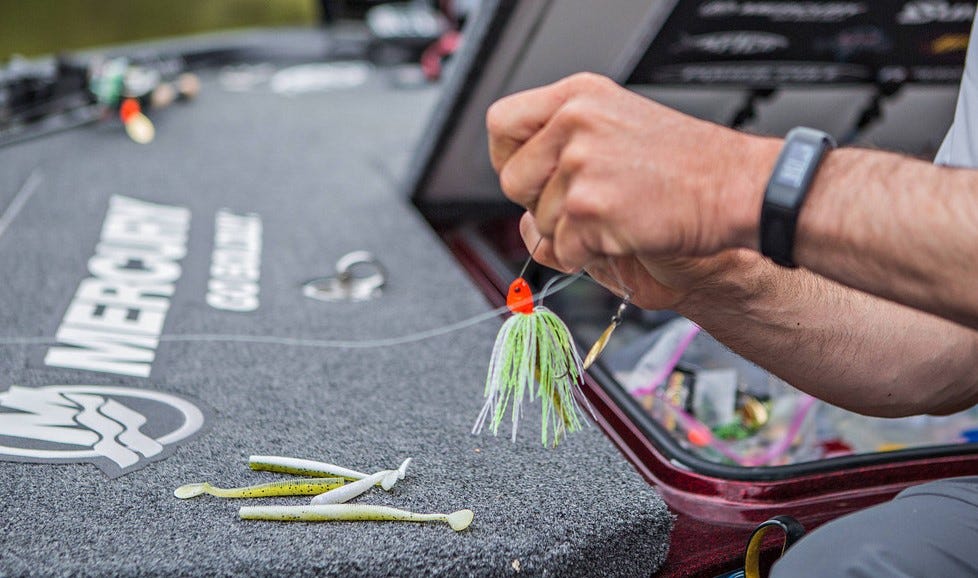- Feb 10, 2022
How to Choose the Best Spinnerbait for Bass, Every Time
We’ve gleaned expertise from Jason Christie’s many years of refining spinnerbait knowledge to provide you a shortcut to spinnerbait fishing success.
Enjoying consistent success with a spinnerbait for bass is so much more than casting and retrieving. For Bassmaster Elite Series Pro Jason Christie, there is a right time and place for fishing a spinnerbait, and there are several variables to consider when selecting the right spinnerbait. Christie is considered one of the best spinnerbait anglers on the planet, having earned countless dollars in tournament winnings a spinnerbait on the end of his line. Let’s dive into his recipe for success fishing a spinnerbait for bass!
When & Where
“I’d like to throw a spinnerbait 365 days a year, but the problem is, I can’t. It calls for certain conditions for the spinnerbait to work really good,” Christie said, noting that he prefers water temperatures between 50 and 70 degrees for throwing a spinnerbait for bass because that temperature range will push fish to the bank. “I can catch ‘em good outside that range, but the best is between 50 to 70 degrees. That 20-degree swing is really good,” he said.
Christie favors off-colored or dirty water, which also pushes fish up to shallow cover such as rocks, laydowns, stumps, docks, or grass for spinnerbait fishing, and one condition where Christie will seldom select a spinnerbait as his primary bait choice is for fishing in gin-clear water. He reasons that bass in clear water will have time to see and think about the bait as it moves through the clear water. Under such conditions, he favors a jerkbait or swimbait.
Developing Ideal Spinnerbaits


Jason Christie grew up learning to fish a spinnerbait for bass, learning from his father and uncles, including one uncle who Christie considered a “spinnerbait guru.” They taught Christie about intricacies of techniques and features that were important in each spinnerbait.
“We were always tinkering, playing, or trying to modify our spinnerbaits. We took the pieces off each spinnerbait that we liked, such as blades, hook, wire size, head, color, and skirt. We blended them together to make a spinnerbait that we had confidence in,” he said.
Christie and his family spent much time on the water, learning about the features and performance of each spinnerbait, and they tested various blade configurations and bait colors to determine which the bass most preferred in whatever conditions that they faced. Christie and his family kept their ultimate homemade spinnerbait a secret and only shared it with a select few people.
In 2019, Christie applied the knowledge gained through years of tinkering and modifying spinnerbaits for bass with his family and teamed up with engineers from the BOOYAH Bait Company to develop the Covert Series of spinnerbaits.
“The Covert was a family thing, with a lot of input from all of my uncles and my dad, because they all had a lot of experience,” Christie noted.
Each Covert Spinnerbait is fitted with a modified Booyah head design featuring a raked-out gill, which offsets the blade’s torque to keep the bait running true at all speeds.
“I am really excited that BOOYAH created a head that will not roll over even at high speeds,” Christie said.
The Booyah Covert spinnerbait comes with all of Christie’s select components and is offered with several blade types and configurations to meet a variety of conditions.
“Before, I used to always take a spinnerbait and modify it in some way, and now, I use it straight out of the package,” Christie said.
Spinnerbait Selection


Walking into a tackle shop and seeing so many spinnerbait variations with different blade combinations, head sizes, and colors can be overhelming. Christie’s rule of thumb is the clearer the water, the faster you want the bait to move, and he favors willow leaf blades for faster presentations. As the water gets colder and dirtier, Christie prefers a spinnerbait with a little thump and leans toward round blades such as an Indiana or Colorado blade. After the bass are finished spawning, Christie opts for a variation of tandem blades that is not as loud as Colorado or Indiana blades.
When the fish are really biting a spinnerbait, Christie will have several rods rigged, with variations of spinnerbaits on the deck of his boat. If he runs to the back of a creek and encounters dirty water, he may choose a spinnerbait with a more visible red blade. He may then fish halfway out of the creek, where the water is less dirty, and will change to a different blade and color configuration. If he fishes his way out of the creek and the main-lake water color is different, he’ll again grab a different spinnerbait rod from the deck.
To help anglers figure out the proper spinnerbait for the situation, Christie partnered with BOOYAH and Lurenet to develop the Covert Heat Map. An angler can go to the interactive Heat Map and select the water color and water temperature where they are fishing, and the map will show spinnerbait blade configuration, sizes and colors that Christie recommends for that situation.
The map provides a primary spinnerbait choice and two secondary picks, all specific to size and color, for each condition. Christie noted that you can easily dial in the blade configuration and color, which dramatically increases your opportunity to succeed.
Spinnerbait Presentations
Although many anglers have success just casting out a spinnerbait and reeling it in with a straight retrieve, Christie has learned that adding action to the spinnerbait will draw extra strikes.
“My dad told me when I was 10 to not just throw it out and reel it in. Make it look alive!” Christie said.
Christie does something with most retrieves to trigger reactions, whether that is pausing, speeding up, or popping the rod tip. It might differ for each piece of structure. Sometimes, pausing the reel turn for a half a second will make the spinnerbait skirt flare. Sometimes reeling the spinnerbait by a stump and then killing the retrieve will draw a strike.
Christie said that if fish are biting, you can easily catch them by just throwing your spinnerbait out and reeling it in, but at those times when fish are inactive, you have to do something in your retrieve to trigger a reaction.
Trailer Talk


Christie’s only “add on” to a Covert Series spinnerbait is a soft plastic trailer.
When targeting largemouth bass, Christie often uses a YUM Pulse swimbait as a trailer because it is buoyant and will slow the fall of the spinnerbait in cold or dirty water. If the water is warmer, Christie will retrieve his spinnerbait much faster, and he will opt for a YUM Swim’N Dinger, as it is slimmer and less buoyant than a Pulse.
When Christie is burning a spinnerbait for smallmouth bass, he prefers to not use a trailer.
Christie fishes his spinnerbait without a trailer hook most of the time as he believes a trailer hook can prevent a fish from getting the bait in its mouth.



